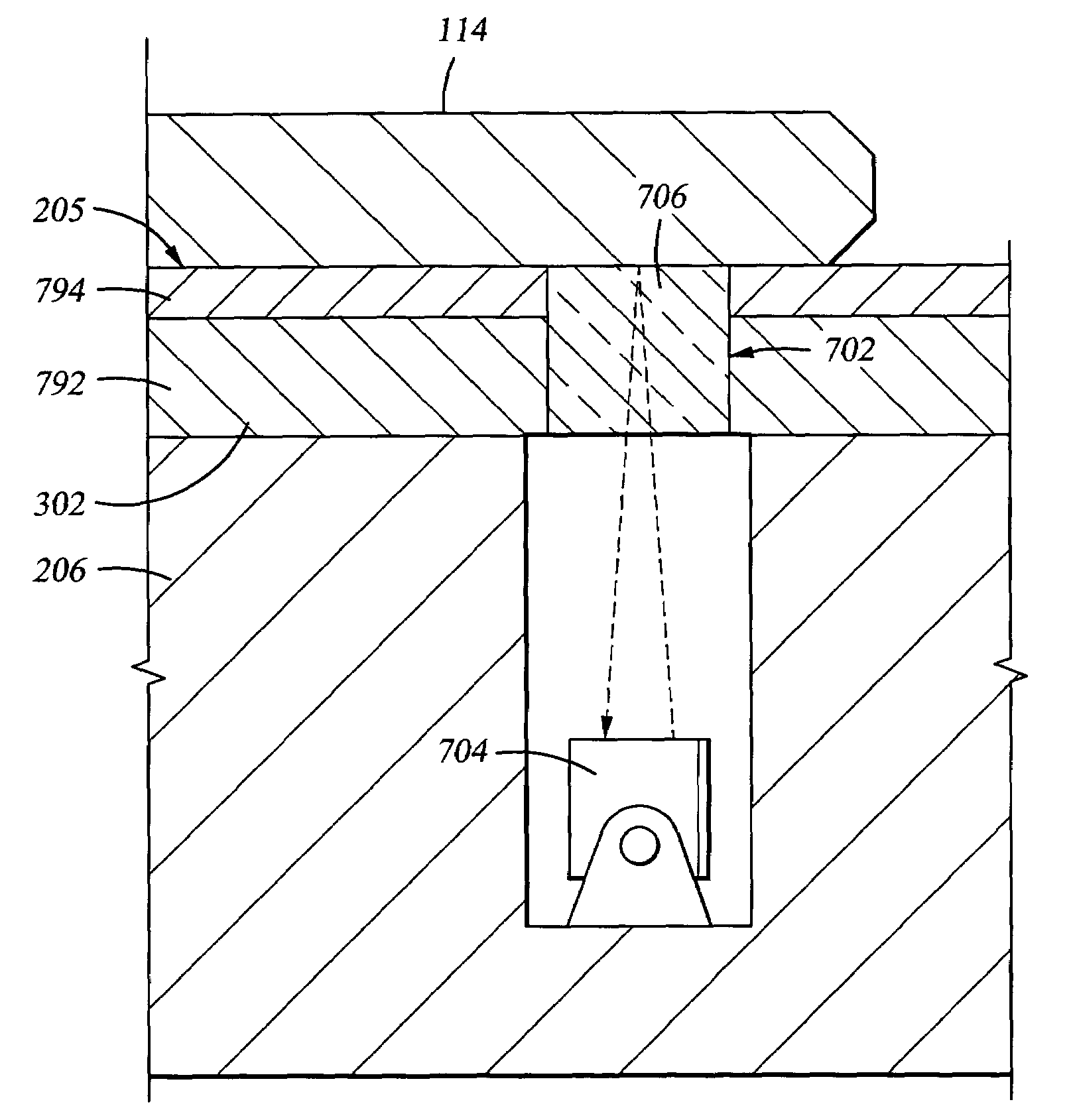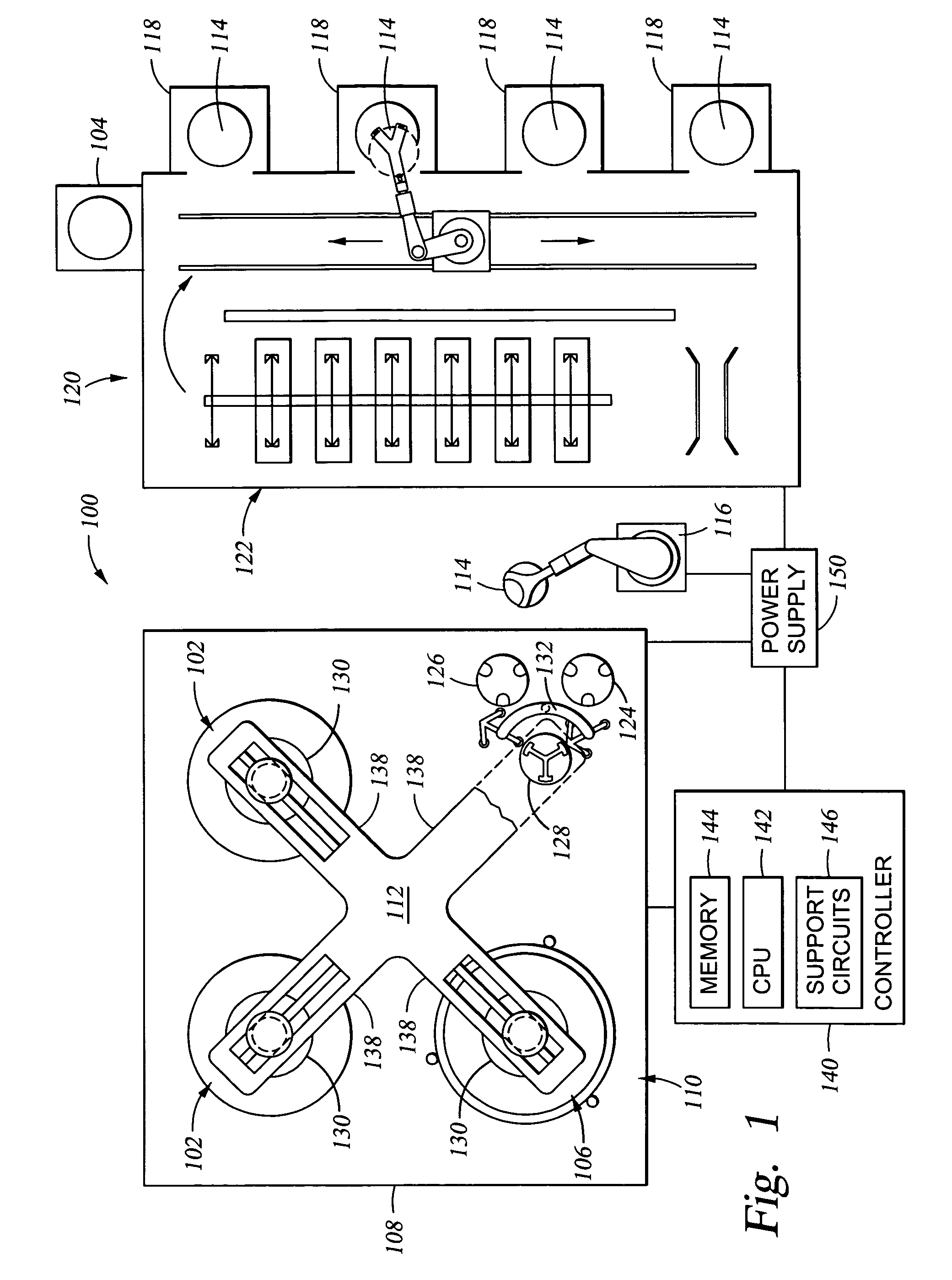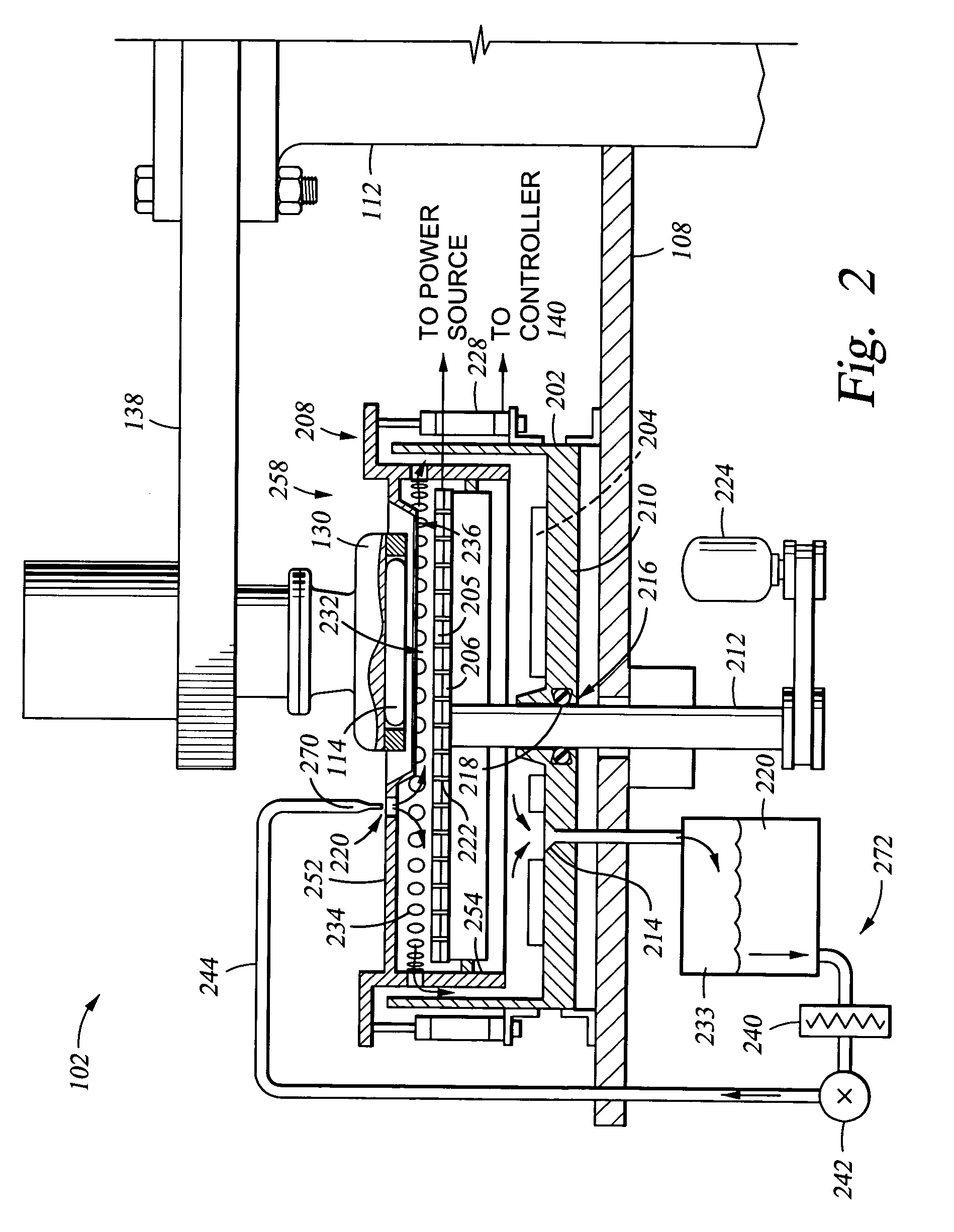Conductive polishing article for electrochemical mechanical polishing
a technology of electrochemical mechanical polishing and polishing article, which is applied in the direction of abrasive surface conditioning device, scraping machine, textiles and paper, etc., can solve the problems of general non-interface between the conductive material and the barrier layer, the excess copper material, and the special fabrication problems of copper, etc., to facilitate the flow of material
- Summary
- Abstract
- Description
- Claims
- Application Information
AI Technical Summary
Benefits of technology
Problems solved by technology
Method used
Image
Examples
Embodiment Construction
[0056]The words and phrases used herein should be given their ordinary and customary meaning in the art by one skilled in the art unless otherwise further defined. Chemical-mechanical polishing should be broadly construed and includes, but is not limited to, abrading a substrate surface by chemical activity, mechanical activity, or a combination of both chemical and mechanical activity. Electropolishing should be broadly construed and includes, but is not limited to, planarizing a substrate by the application of electrochemical activity, such as by anodic dissolution.
[0057]Electrochemical mechanical polishing (ECMP) should be broadly construed and includes, but is not limited to, planarizing a substrate by the application of electrochemical activity, chemical activity, mechanical activity, or a combination of electrochemical, chemical, and mechanical activity to remove material from a substrate surface.
[0058]Electrochemical mechanical plating process (ECMPP) should be broadly constr...
PUM
| Property | Measurement | Unit |
|---|---|---|
| surface roughness | aaaaa | aaaaa |
| surface roughness | aaaaa | aaaaa |
| dielectric constants | aaaaa | aaaaa |
Abstract
Description
Claims
Application Information
 Login to View More
Login to View More - R&D
- Intellectual Property
- Life Sciences
- Materials
- Tech Scout
- Unparalleled Data Quality
- Higher Quality Content
- 60% Fewer Hallucinations
Browse by: Latest US Patents, China's latest patents, Technical Efficacy Thesaurus, Application Domain, Technology Topic, Popular Technical Reports.
© 2025 PatSnap. All rights reserved.Legal|Privacy policy|Modern Slavery Act Transparency Statement|Sitemap|About US| Contact US: help@patsnap.com



